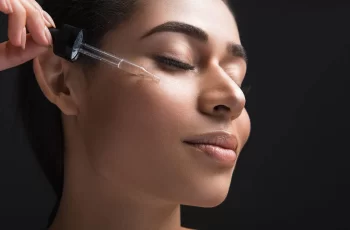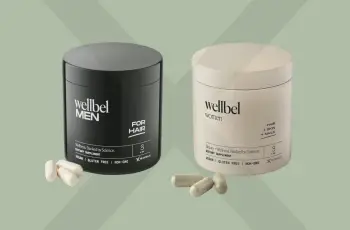
Which is better, Squalene or Squalane?
We’ve already talked about how stressful the skincare industry can be, especially when you consider two very similar-sounding ingredients that have come out today. But don’t worry, I’m here today to clear the air and put an end to any confusion you may have when trying to figure out which is better, Squalene or Squalane. So, armed with that knowledge, let’s get started!
Are Squalane and Squalene the Same?
Here’s a quick overview of the differences between Squalene and Squalane:
Squalene
Naturally found in the body, helps produce sebum (the skin’s natural oil)
Is a natural antioxidant that protects the skin barrier
Reduces fine lines and sun damage
Known to be unstable and have a short shelf life
Squalane
Formerly derived from shark liver, now made from vegetable oils
Can also be derived from Squalene through a hydrogenation process
More stable and has a longer shelf life than Squalene
Helps reduce signs of premature aging and dry skin patches
Squalene (with an “e”) is actually produced in the sebaceous glands of the skin inside the body. This is where sebum (the oil found in the body) is released to the surface of the skin, and the amount of oil on the surface can be determined based on your skin type. This means that oily skin produces more sebum than other skin types, but the general rule is that the skin needs a certain amount of sebum to remain healthy and function properly. Since squalene is a lipid, it can help maintain the health of the skin barrier by repairing damage while fighting free radicals (such as those caused by UV radiation and pollution).
However, squalene also has downsides: after the age of 30, squalene production decreases, causing the skin to show signs of premature aging and potentially become dry. To counteract this natural process, you can add additional moisturizing ingredients such as niacinamide and hyaluronic acid. There is also an interesting factor to consider with these two ingredients: Although squalene is in its natural form, it is very unstable, which is why many formulas have been developed to produce squalene versions. In order to create squalane with an “a”, it must undergo a hydrogenated state. This means that squalane has a longer shelf life and can be exposed to air without worrying about it oxidizing and losing its effectiveness.
As for squalane itself, it has been used in products for several years after being extracted from shark livers. For obvious reasons, people have turned to more ethical sources, resulting in squalane now coming from plants such as olive and rice bran, as well as other vegetable oils such as amaranth seed, wheat germ and sugar cane.
What does squalane do for your face?
It is estimated that squalene produces up to 12% of the skin’s natural oils and is essential for maintaining the health of the skin barrier. With its highly effective moisturizing properties, it keeps the skin looking and feeling hydrated. Squalane can significantly reduce the signs of ageing and dry patches by maintaining the overall health of the skin’s protective barrier by keeping natural water and oil levels at the right levels, allowing the skin to protect itself from free radical damage. This damage is caused by pollution, sunlight, central heating and other environmental aggressors that come into contact with the skin on a daily basis. With the help of squalane, your skin will become more plump, healthy, with an even texture and tone, and full of youthful elasticity.
Is squalane better than hyaluronic acid?
Similar to squalene, hyaluronic acid is also produced naturally in the body, but its production also decreases with age. Deciding which one is better is much more difficult, as both have impressive hydrating effects on the skin. Hyaluronic acid is a humectant, i.e. it can penetrate the skin and bind water to skin cells. This allows moisture from the product and surrounding facial areas to be absorbed into the skin, keeping the surface barrier fully hydrated and healthy.
Squalane can have a similar effect, but you’ll find that people with dehydrated and dry skin particularly benefit from squalane, as it can stimulate sebum production and keep the protective barrier looking and feeling healthy. Hyaluronic acid is a more effective ingredient for people with oily skin, as oily skin can show signs of uneven skin tone, and the appearance of acne scars can be significantly reduced.
Can Squalane and Vitamin C be used together?
In fact, yes, there are some serums and ingredients that work well together, and Vitamin C and Squalane is one of them! Serums usually have a lightweight consistency, so they are easy to apply, and can penetrate into the lower layers of the skin to reach areas of the skin that need more hydration or other treatments, from signs of aging like fine lines and wrinkles to uneven skin tone. When applying Vitamin C and Squalane together, it’s best to apply Vitamin C first to treat dark spots and dull skin, and then apply Squalane for hydration.
Should Squalane be applied before or after moisturizer?
This depends on the product that incorporates Squalane. If it’s included in a face wash, serum, or toner, it should be applied before moisturizer. For best results, I recommend using an exfoliating toner with an AHA like glycolic or lactic acid to cleanse the skin and remove dead skin cell buildup. Once this barrier is removed, you can then apply a serum enriched with Squalane to nourish and moisturize cleansed skin. If you’re using this routine during the day for important UV protection, you can apply moisturizer, eye cream, and SPF sunscreen.
I hope today you have a better understanding of which ingredient is better and how to determine which is best for you and your skin type. If you’d like to learn more about Squalane and Squalene, you can read our blog post. Don’t forget to visit us on Instagram for daily posts, product launches, and giveaways!


